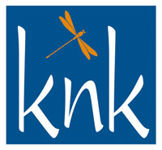
A common complaint about regional newspaper websites is the number of ads popping up and interfering with the flow of reading. But the daily newsbrands of Scottish publisher DC Thomson have chosen a different route, creating a clean site to attract paid subscribers, and it is paying dividends.
The combined websites of the Press and Journal and Evening Express and The Courier and Evening Telegraph passed the landmark of 25,000 paid subscribers in October 2022, just 18 months into their drive to create a new, sustainable model for local journalism.
It was DC Thomson’s vision for a digital first newsroom that won over Frank O’Donnell, former editor-in-chief of The Scotsman, to become editor-in-chief of the Press and Journal and Evening Express, which cover Aberdeen, Aberdeenshire, Moray, Inverness and the Highlands and Islands.

O’Donnell says: “I was really intrigued by the path that DC Thomson were planning to take with the Press and Journal and The Courier which is the sister title. I had worked at The Scotsman before and I’d been part of a digital transformation in the newsroom there, but it had been largely scale-focused, pageview led. As a user, seeing ads popping up on screen and the content all broken up with adverts in the middle, didn’t really feel like it was going to be sustainable.”
“This was the first time I’d had a conversation with a publisher who had married their vision with my vision, which was one of putting the reader in control while making the reader pay, which I thought would reduce the number of ads on the site and nudge the content quality.”
O’Donnell joined the Press and Journal in May 2020, in the middle of the first lockdown. He believes the way in which the workplace had to dramatically shift at this time was beneficial to instituting change at the newspapers. The groundwork was already underway when he joined, and DC Thomson also had the advantage of being relatively late to undergo digital transformation, meaning the company was able to learn from the mistakes and successes of others. They set up phone calls with the Philadelphia Inquirer, the Dallas Morning News, and the Sacramento Bee amongst others, and Brian McGrory, the editor of the Boston Globe, gave them an hour of his time.
Improve quality
One of the first lessons they learned was that if you are going to ask users to pay, you must first change the content.
“What I see with a lot of publishers is that they put a paywall up, but the content is pretty much the content they had before the paywall, so they’re just saying to people you now need to pay. We’ve tried very hard to increase the quality by giving people more time to write it, by demanding more, by using tools that are available: data, graphics, different story-telling formats,” says O’Donnell.
They have invested in an impact team, working on longer term investigations, which O’Donnell says has been a “game changer”. For example, they produced a 40-minute documentary on the disappearance of a 20-year-old man called Shaun Ritchie from a Halloween party at a remote Scottish farmhouse in 2014. His disappearance led to one of the largest ever missing person investigations in Scotland, but Ritchie has never been found and the case remains unsolved. The documentary was only available to paid subscribers and in the first ten days after its release, it generated over 1,000 subscriptions.
Data journalism has been another focus, with a central team working across both titles. As well as contributing data analysis to individual articles, they also produce independent work such as A&E trackers and other health statistics.
All the staff photographers have upskilled so they can also do video. The sports team came up with the idea of securing the rights to screen Highland League football matches. Every week, they produce Highland Weekly, a magazine programme including match highlights and interviews with managers and players, which has been another subscription driver.
There is a meter on the site allowing people to read a certain number of articles for free, but some premium content is only available to subscribers from the outset.
Alongside putting extra resources into its journalism, DC Thomson has also invested in an audience management team who can respond to subscriber queries to ensure the subscriber journey is optimised.
Restructure
O’Donnell recalls: “In the year I joined, we effectively went from a print structure to a digital structure and explained to people the journey we were going on. Every single person changed their job. That was all done during lockdown, so we worked from home the entire period. I had to effect this change over a Teams call which when you’re telling someone that what they’ve done for the last few years has got to change, is quite difficult, especially when they’ve never actually met you. I had to win people’s trust, which fortunately has happened.”
In this case, restructuring was not a euphemism for redundancies, in fact there were new hires in areas such as data, video and SEO. Being relatively late to the digital party meant that a lot of the cynicism which surrounded such changes a few years ago has now given way to an understanding of the need for transformation.
“No one was telling me, ‘print is going to come back’. People understood that for the longevity of the brand, it was very important that we had a sustainable future online as well as in print. They understood as well that for their own careers, being upskilled was important for them, and they didn’t want to be left behind,” says O’Donnell.
There have been fundamental changes to the rhythm of production, with the website rather than print now being the main driver of stories. In the past, there was a morning conference at 11am and afternoon conference at 3pm. Now, morning conference has been brought forward to 9.30am and is solely focused on digital, followed by a second digital only conference at 2pm. They have introduced a three-edition strategy, looking at 6am, 11.45am and 5pm when there are natural peaks in their audience, to ensure they are publishing content at the right time.
They have done away with the flat plan, so that choosing which stories to cover is now decided by what will work best online, rather than what will work in print. Stories are given as much space as needed, rather than written to fit into a particular slot on the page.
O’Donnell explains: “It was important to allow the digital team not to have to think about print. I wanted that to be something separate because they had so much to consider in this new world. I didn’t want people saying, ‘can you just give me another 150 words on that story because my box is short of print?’”
There is also a separate print conference and a head of print whose job it is to place all the copy that comes in from the digital team, together with a final meeting at 5.30pm to decide what will go on the next day’s front page. Print now sits round the corner from the main newsroom, so it doesn’t have the ability to influence the copy coming through. The digital first approach has also meant a change in templates for the print editions.
Combined newsrooms
The newsrooms of the Press and Journal and Evening Express have been combined, with section heads sitting together in the middle of the newsroom while their teams hot desk – in theory at least, as in reality people tend to graduate towards the same seats. While there was once a fierce sense of competition between the evening and morning titles, O’Donnell has explained to his staff that the real threat now lies elsewhere.
“I tried to emphasise to people there was an existential threat to newspapers and the real competition was from Facebook or Google or other publishers, that people might get their information from elsewhere and we needed to band together,” he says.
Bringing the newsrooms together has enabled them to stop doing things twice, for instance sending reporters from both titles to the same event, which in turn frees up resources to be diverted elsewhere.
As part of the transformation, the titles have introduced a quality reads metric, focusing on the length of time people engage with the website rather than just the number of pageviews. By measuring mouse movements, they can see how long someone has spent on an individual article and by combining that information with the average reading speed, they can calculate how far down they have read.
Print is not completely forgotten. They have recently revamped the Saturday Press and Journal to give it more of a weekend feel and introduced an extra 16 pages taking it up to 150 pages.
“I think we’ve got a long time left in print, but if you’re going to invest in any day, it felt like Saturday is the day. It’s already our highest sale day. From a commercial perspective, if the paper’s hanging around for a bit longer, that’s good for advertisers. We’ve spent a lot of time transforming digital, but print’s still important,” says O’Donnell. Their Saturday sale is now more stable than Monday to Friday and early indications are that readers like the new content.
In the next phase of development, O’Donnell and his team are looking at subject areas that perform well but haven’t yet been given a dedicated focus, such as property. They are also planning to introduce product improvements such as push notifications as well as a system that will automatically decide what content to make premium.
O’Donnell says, “We’ve still got a long way to go. Our North Star is 75,000 digital subscribers. We’re more than a third of the way there which is great. We’re always looking at have we got the right balance in terms of teams, that will be key for the next stage.”
This article was first published in InPublishing magazine. If you would like to be added to the free mailing list to receive the magazine, please register here.












